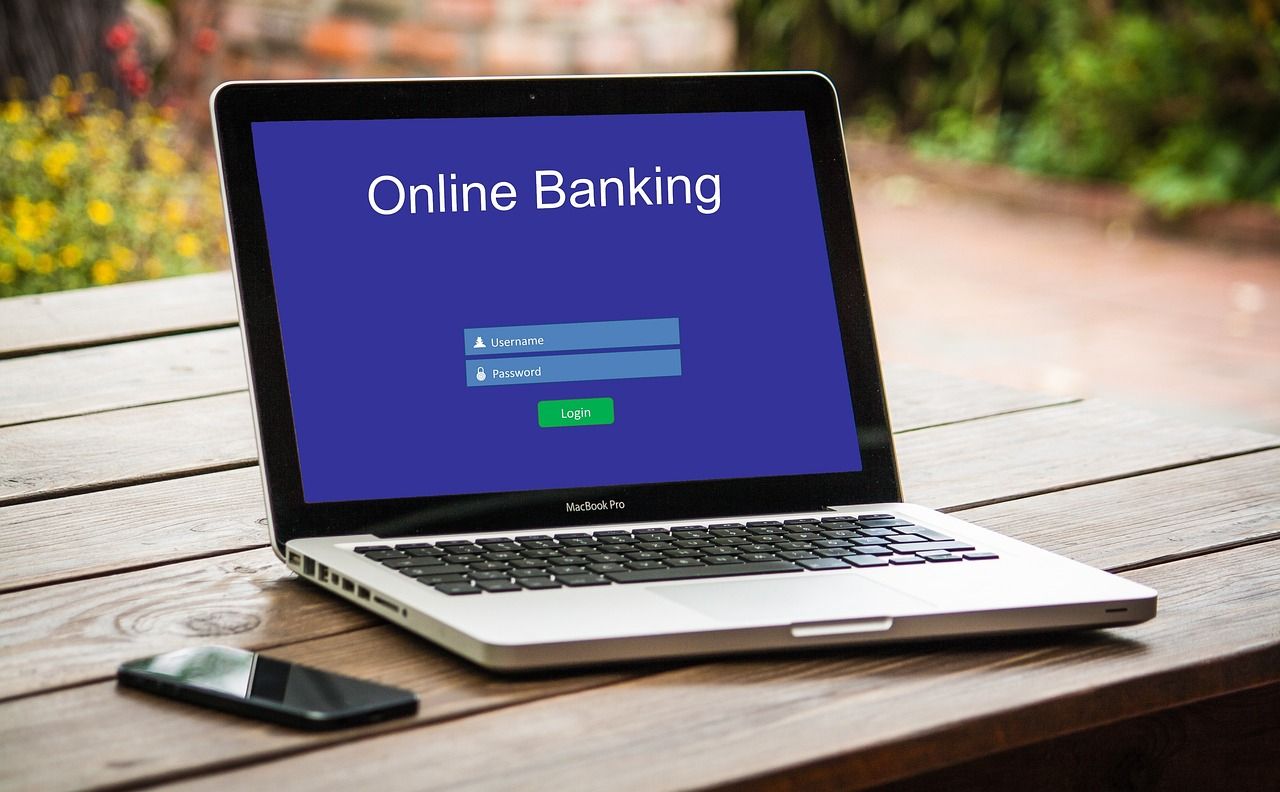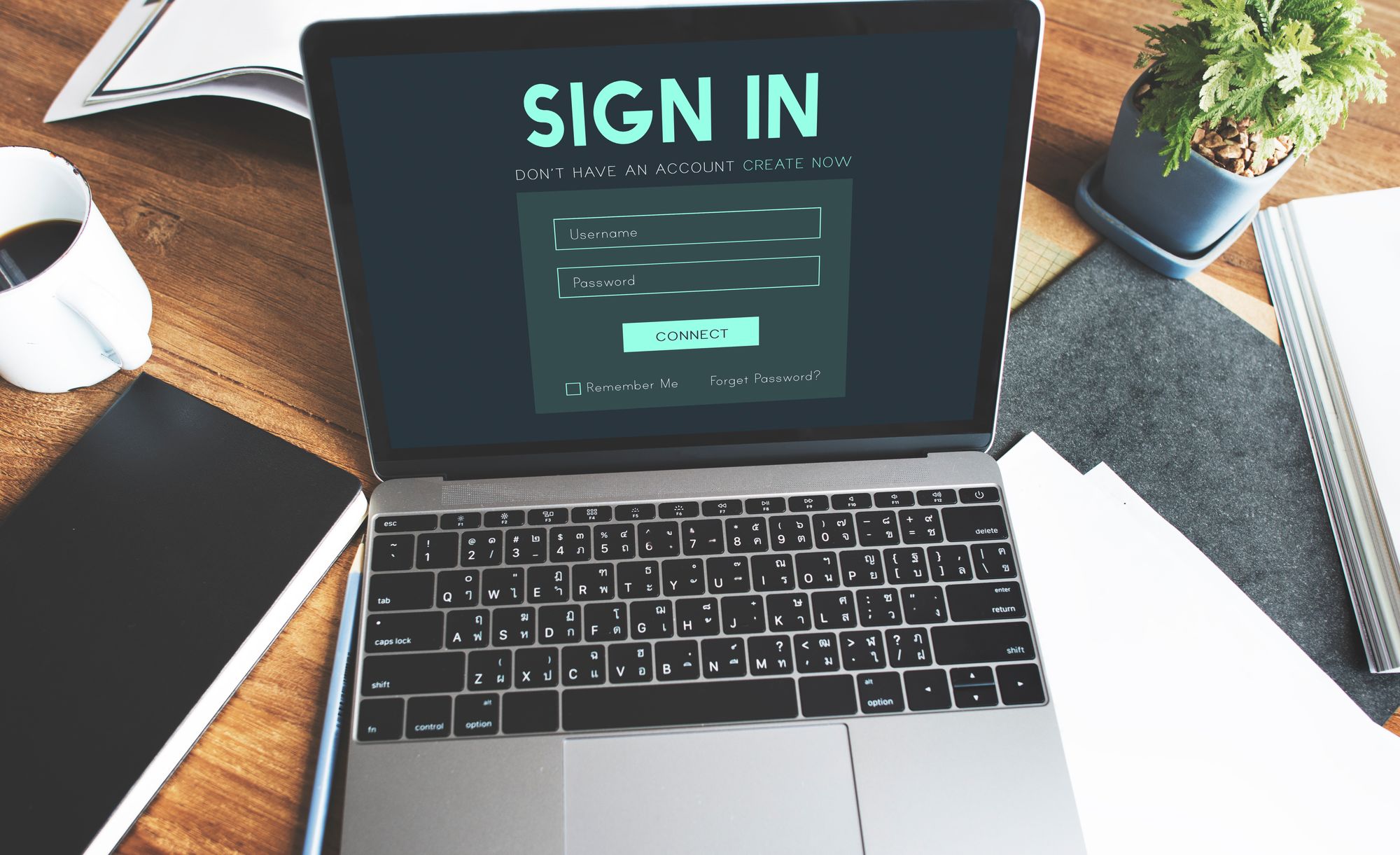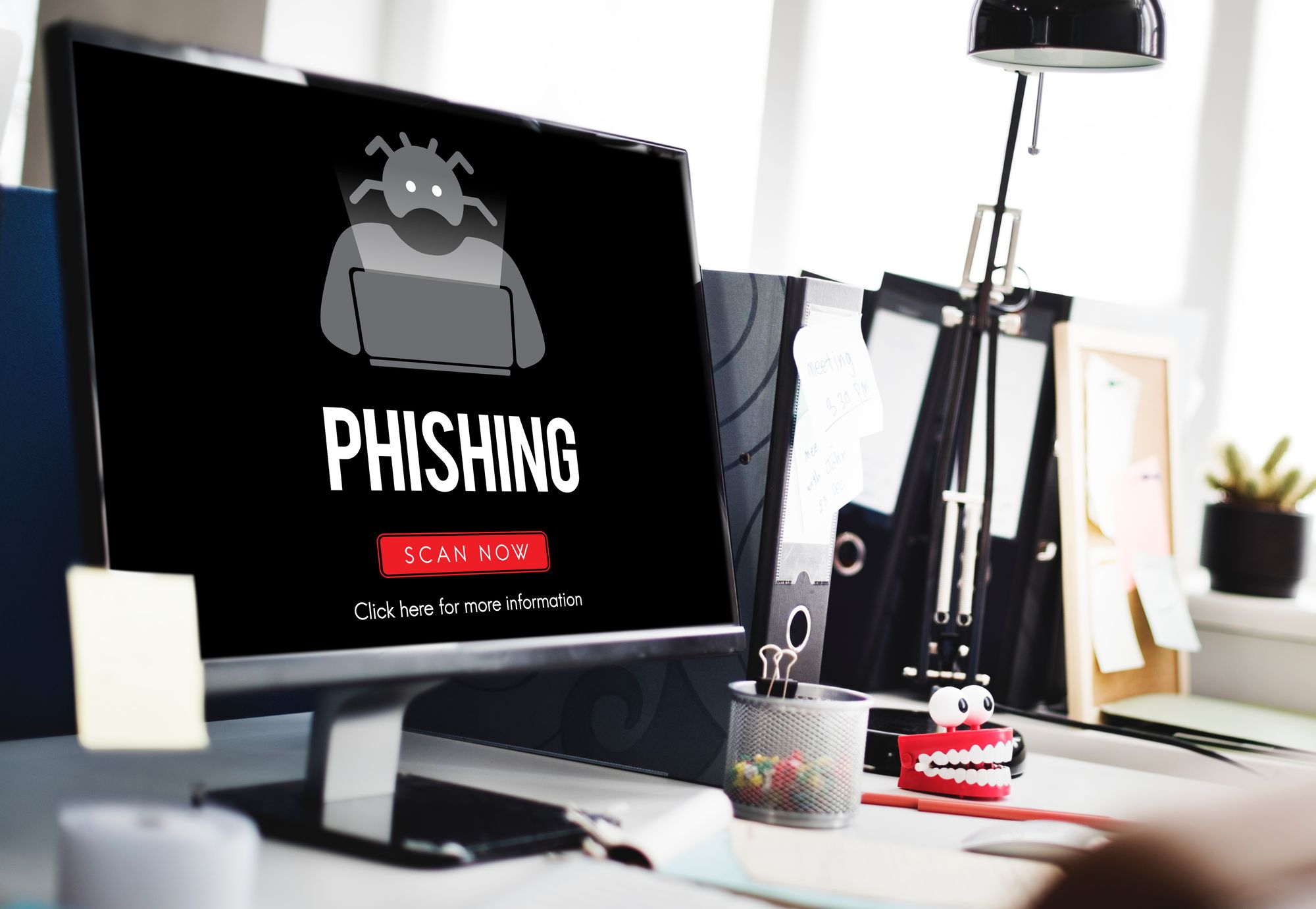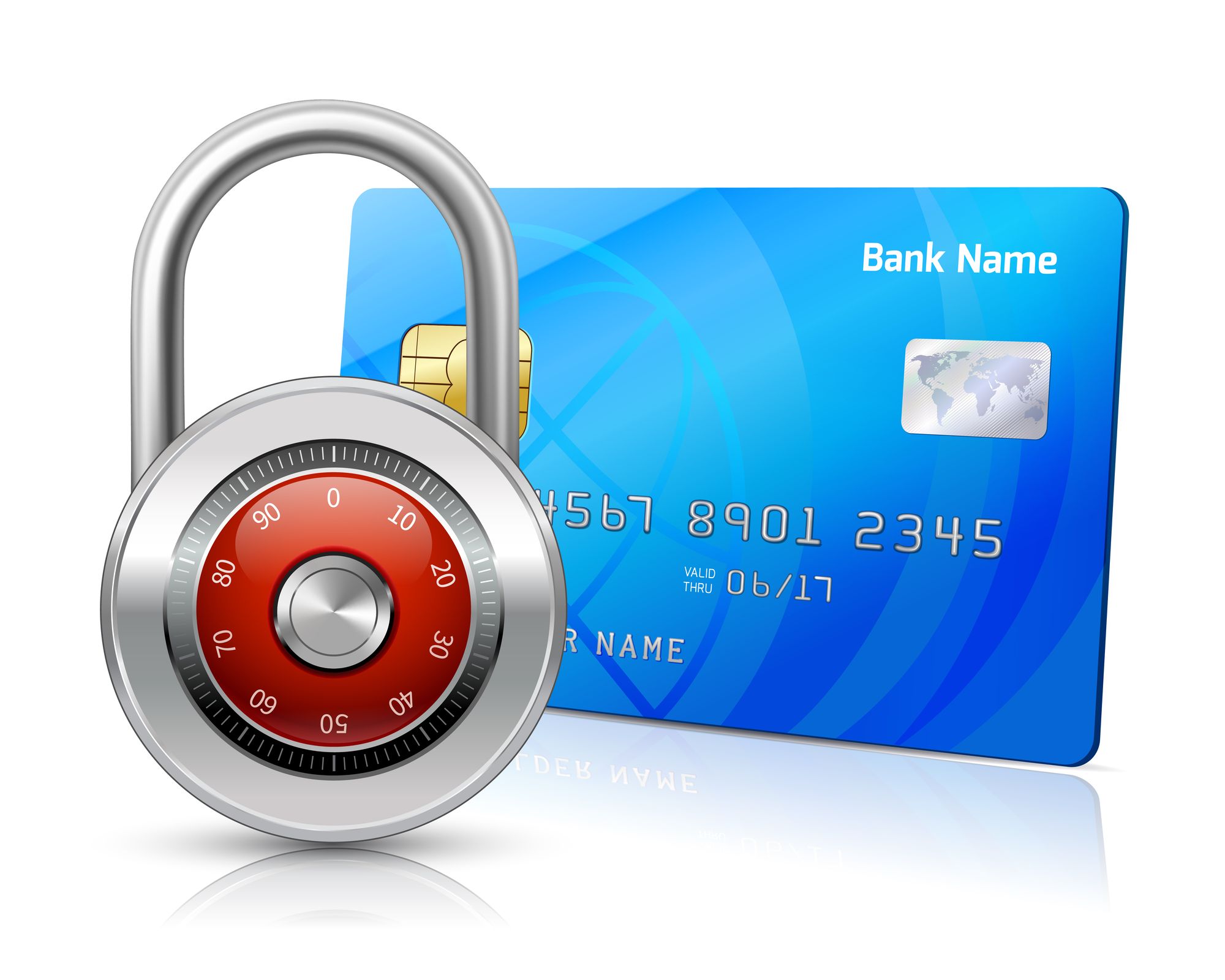Rules for online banking safety
93% of online banking users take steps to secure their accounts, emphasizing the importance of online banking safety practices.

Key Takeaways
1. Online banking safety is crucial in the digital age, especially for businesses managing significant transactions regularly.
2. Common threats to online banking security include phishing, hacking, and identity theft. Being aware of these threats is the first step towards prevention.
3. Implementing secure online banking passwords is a simple yet effective measure to protect your financial information.
4. Two-factor authentication provides an extra layer of security to your online banking and is recommended for all users.
5. Recognizing phishing scams is important, as scam emails are becoming increasingly sophisticated. Be cautious of suspicious links and requests for personal information.
6. Public Wi-Fi networks can be a hotbed for cyber threats. Avoid accessing sensitive financial information on public networks whenever possible.
7. Encryption plays a significant role in securing online banking transactions, keeping your sensitive information unreadable to potential hackers.
8. Regular monitoring of your online banking activity can help detect any suspicious activities early, reducing potential damage.
9. Protecting your online bank account goes beyond strong passwords and includes measures like using secure networks, antivirus software, and firewalls.
10. Staying updated with best practices for online banking security can help businesses keep their financial information protected.
11. Ensuring secure transactions online involves using secure payment gateways, SSL certifications, and other security measures.
Introduction
In this digital era where transactions are becoming increasingly cashless, online banking has become a norm for both individuals and businesses. As convenient as it is, it also brings along new challenges and threats that could potentially compromise your financial security. This article aims to highlight the importance of online banking safety, the common threats you may encounter, and how to navigate them effectively.
We live in a time when cyber threats are continuously evolving, making it crucial for consumers and businesses to stay informed and vigilant. Despite the numerous advantages of online banking such as accessibility, speed, and convenience, it has its share of vulnerabilities. Hackers and cybercriminals are constantly on the lookout for any weaknesses they can exploit, potentially leading to significant financial losses.
In this comprehensive guide, we will delve into the best practices for secure online banking, ways to recognize and avoid phishing scams, the role of two-factor authentication, and the importance of regularly monitoring your online banking activity. By understanding these aspects, you can empower your business, avoid common investing mistakes, and ensure secure online financial transactions.
Understanding the Importance of Online Banking Safety
Online banking is revolutionizing the way individuals and businesses manage their finances. With the ability to check balances, transfer funds, and make payments at the click of a button, it's no wonder that this technology has gained widespread acceptance. However, as online banking becomes increasingly prevalent, so does the importance of maintaining online banking safety.
Cyber threats are evolving and becoming more sophisticated, posing significant risks to online users. For businesses, the stakes are even higher. A single breach can result in substantial financial losses, reputational damage, and loss of customer trust, which can take years to rebuild.
Moreover, the COVID-19 pandemic has further accelerated the shift to digital banking, as more people prefer to conduct their financial transactions remotely. This surge in online banking activities has also attracted the attention of cybercriminals, making the internet a more dangerous place for financial transactions.
Therefore, understanding and implementing secure online banking practices is no longer optional, but a necessity. It is crucial for everyone, especially business owners, to familiarize themselves with online banking safety tips and secure practices to protect their financial assets. This article aims to provide comprehensive insights into online banking safety, common threats, and the best practices to safeguard your online bank account.
In the end, the safety of your online banking experience comes down to awareness, vigilance, and taking the necessary precautions to secure your financial transactions online.

Common Threats to Online Banking Security
Online banking revolutionizes the way we handle our finances, but it also exposes us to a range of cyber threats. Let's take a look at some of the most common ones:
- Phishing: Phishing involves cybercriminals tricking you into revealing your personal information, typically through deceptive emails or websites. For instance, you could receive a seemingly legitimate email from your bank, asking you to update your details on a linked website. However, this website is a fake, designed to steal your information.
- Hacking: This involves unauthorized access to your online banking account. Hackers employ various techniques, such as keystroke logging, where they monitor and record your keyboard input to gain your login credentials. A real-life example is the 2014 incident involving a Russian gang that amassed over a billion internet passwords.
- Identity Theft: Here, cybercriminals use your stolen personal information to impersonate you and carry out financial transactions. The 2017 Equifax data breach, where hackers stole the personal information of 147 million people, is a prime example of how such information can be used for identity theft.
These threats underscore the need for heightened security measures in online banking. It's crucial to be aware of these threats and take the necessary precautions to protect your online banking account from cybercriminals. This includes deploying robust passwords, enabling two-factor authentication, and regularly monitoring your account for any suspicious activity. By being vigilant and proactive, you can significantly reduce the risk of falling victim to these cyber threats.
Best Practices for Creating Secure Online Banking Passwords
One of the most effective defenses against online banking threats is the use of strong, unique passwords. Your password is the initial barrier that protects your confidential banking information from unauthorized users, so it's crucial to keep it secure.
Here are some best practices for creating and maintaining secure online banking passwords:
- Complexity: Create a password that's complex and includes a combination of upper and lowercase letters, numbers, and special characters. The more complex your password, the harder it is for cybercriminals to crack.
- Length: Longer passwords are more secure. Aim for a minimum of 12 characters, though 16 characters is even better.
- Unpredictability: Avoid using personal information such as your name, birth dates, or common words. These can be easily guessed by hackers.
- Uniqueness: Don't reuse passwords. Each account should have a unique password. This way, if one account is compromised, your other accounts remain safe.
- Regular Updates: Change your passwords regularly, at least every three months. This decreases the chances of your password being cracked.
- Password Managers: Consider using a password manager. These tools generate, store, and fill in complex passwords for you, making it easy to maintain unique and strong passwords for every account.
- Multi-factor Authentication: Whenever possible, enable multi-factor authentication. This adds an extra layer of security, as you need to provide more than just your password to access your account.
By adhering to these best practices, you can significantly enhance the security of your online banking activities and safeguard your financial assets.
Two-Factor Authentication and Its Role in Online Banking Security
Two-Factor Authentication (2FA) is a security measure that adds an extra layer of protection to your online banking account. It does so by requiring two types of identification before granting access. Typically, these factors include something you know, such as a password, and something you have, like a mobile device.
The primary advantage of 2FA is that it significantly decreases the risk of fraud and data theft. Even if a cybercriminal manages to obtain your password, they still need the second factor - usually a temporary code sent to your mobile device - to access your account.
For instance, imagine you're logging into your bank account from a new device. After inputting your password, the bank's system recognizes the unfamiliar device and triggers 2FA. You then receive a unique, time-sensitive code via text message or an authentication app, which you must input to gain access to your account.
In an era where cyber threats are rampant, implementing 2FA has become an essential practice for online banking security. It provides an additional layer of defense, making it harder for unauthorized users to breach your account.
As users, it's important that we embrace this practice and ensure it's enabled on all our online banking platforms. In doing so, we can contribute to the fight against cybercrime and make our online banking experience safer and more secure.

Step-by-Step Guide to Enabling Two-Factor Authentication (2FA)
Two-factor authentication adds an extra layer of security by requiring not only a password and username but also something that only the user has on them, i.e., a piece of information only they should know or have immediately to hand - such as a physical token.
Step 1: Access Security Settings
- Log into your online banking portal.
- Navigate to the account or security settings. This option is typically found in the menu under "Settings" or "Security."
Step 2: Find Two-Factor Authentication Settings
- Look for an option labeled “Two-Factor Authentication,” “2FA,” or “Multi-factor Authentication.”
- Click on this option to start the setup process.
Step 3: Choose the Type of 2FA
- Select the type of second factor you want to use. Common types include SMS codes, email codes, or an authenticator app.
- Authenticator apps (like Google Authenticator or Authy) are generally more secure than SMS because they do not rely on potentially interceptable communication channels.
Step 4: Follow the Setup Instructions
- If using an app, you may need to scan a QR code with your phone.
- If using SMS or email, confirm the phone number or email address where you will receive the codes.
Step 5: Confirm and Activate
- Enter a test code provided by the system or sent to your chosen device to confirm that 2FA is working.
- Save the changes and log out to test the new setting.
Step-by-Step Guide to Using VPNs for Secure Online Banking
A Virtual Private Network (VPN) encrypts your internet connection, making your online activities private and secure from potential eavesdroppers.
Step 1: Choose a Reputable VPN Service
- Research and select a reputable VPN provider known for strong security measures and a clear no-logging policy.
- Popular options include NordVPN, ExpressVPN, and ProtonVPN.
Step 2: Install the VPN Software
- Subscribe to the service and download the VPN software from the official website.
- Install the software on your device following the provided instructions.
Step 3: Connect to a VPN Server
- Open the VPN application.
- Log in with your credentials.
- Select a server location (choosing a server close to your physical location usually provides better speed).
- Click connect to establish a secure VPN connection.
Step 4: Verify the VPN Connection
- Verify that your IP address has changed to the address of the VPN server using an online service like
whatismyipaddress.com. - Ensure there are no DNS leaks which could expose your original IP address. Many VPN services provide tools to test this.
Step 5: Start Banking Securely
- Once the VPN connection is established, you can safely log in to your online banking accounts knowing that your connection is secure and private.

Recognizing Phishing Scams and How to Avoid Them
Phishing scams are deceptive tactics used by cybercriminals to trick individuals into revealing sensitive information, such as bank account details, credit card numbers, and login credentials.
Phishing scams usually occur via email, where the attacker impersonates a legitimate organization, often a bank or financial institution. For instance, you may receive an email appearing to be from your bank, requesting you to update your account details or verify a transaction. The email typically contains a link that directs you to a fraudulent website designed to capture your personal information.
Here are some tips to help you recognize and avoid phishing scams:
- Check the Email Sender: Always verify the sender's email address. Phishers often use an email address that closely resembles that of a legitimate organization but with slight modifications.
- Be Wary of Urgent Requests: Phishing emails often create a sense of urgency, such as a problem with your bank account, to prompt immediate action. Always contact your bank directly using known contact details to verify the situation.
- Avoid Clicking on Suspicious Links: Never click on links in unsolicited emails. Instead, manually type the website address of your bank into your browser.
- Install Security Software: Use security software that provides real-time protection and regularly updates it to ensure it can detect the latest threats.
By being vigilant and adopting these measures, you can significantly reduce your risk of falling victim to phishing scams.
Tips for Safely Accessing Online Banking on Public Wi-Fi
Public Wi-Fi networks can be breeding grounds for cyber threats due to their often weak security measures. However, there are times when you may need to access your online banking account while on such networks. Here are some tips to ensure a secure transaction:
- Use a Virtual Private Network (VPN): A VPN encrypts your internet connection, making it safer to use public Wi-Fi. It masks your online activity, preventing cybercriminals from intercepting your data.
- HTTPS is Essential: Always ensure the banking site you are using is secured with HTTPS (the lock icon in the address bar). This means the data transferred between you and the site is encrypted.
- Avoid Auto-connect to Wi-Fi: Disable the feature on your device that automatically connects to available Wi-Fi networks, as you could unknowingly connect to a malicious network.
- Install Reliable Security Software: Have robust security software installed on your device. This can detect and block potential threats before they cause harm.
- Log Out After Each Session: Always log out from your banking session after you're done. This reduces the chance of your account being accessed without your knowledge.
- Update Your Device: Regularly update your device and applications. Updates often include security patches that fix known vulnerabilities that cybercriminals could exploit.
By following these guidelines, you can maintain the security of your online banking transactions, even when using public Wi-Fi.
The Role of Encryption in Securing Online Banking Transactions
Encryption is a vital aspect of online banking security. It is a method by which information is converted into secret code that hides the data's true meaning. The science of encrypting and decrypting information is called cryptography.
In the context of online banking, encryption is used to secure communication between your computer (or any other device you're using) and the bank's server. When you send a transaction request, encryption turns your information into a complex code. This ensures that even if the data is intercepted during transmission, it cannot be understood by unauthorized entities.
Most web browsers indicate encrypted connections with a padlock symbol in the address bar. To ensure your transactions are encrypted, always look for 'https://' at the beginning of the web address. The 's' stands for 'secure', and indicates that the website uses encryption.
The use of encryption significantly reduces the risk of your sensitive information being intercepted and misused. However, it is important to keep your browser updated, as newer versions often come with improved security features. Furthermore, avoid conducting online banking transactions on public Wi-Fi networks, as they may not be secure.
Encryption, in essence, acts as a robust security barrier in the cyber world, playing a crucial role in protecting the integrity and confidentiality of online banking transactions.

Staying Vigilant: Monitoring Your Online Banking Activity Regularly
Regular monitoring of your online banking activity is a proactive approach to maintaining your financial safety. It involves routinely checking your account transactions, balances, and all associated activities.
Regular monitoring helps to quickly identify any discrepancies or unusual activities, such as unauthorized transactions, changes in account details, or unnoticed subscriptions. For example, a sudden withdrawal or transfer that you cannot account for could be a sign of a security breach.
Monitoring is made easier with mobile banking apps, which often include instant notifications for account activities. This real-time information allows you to respond promptly to potential threats.
Here are some tips for effective monitoring:
- Regularly check your account balance and transaction history: This helps you spot any unexpected changes.
- Set up automatic alerts: Most banks offer automatic alerts for transactions over a certain amount, failed login attempts, or changes in account information.
- Review your bank statements: Regularly review your bank statements for any unrecognized transactions.
- Update your contact information: Ensure your bank has your correct contact information. This ensures you receive all alerts and notifications promptly.
- Report any anomalies immediately: If you notice any unusual activity, report it to your bank immediately. The quicker the anomaly is addressed, the lesser the potential damage.
Remember, vigilance is your best defense against online banking fraud. Regular monitoring allows you to detect and respond to potential threats swiftly, ensuring your financial safety.
Emerging Threats in Online Banking Security
In the dynamic landscape of online banking, staying informed about emerging threats is crucial for maintaining robust security. This section aims to highlight new types of cyberattacks and potential vulnerabilities, providing readers with up-to-date information to protect their financial assets effectively.
Current Emerging Threats
1. Deepfake Technology in Phishing Attacks
- Description: Cybercriminals are now using deepfake technology to create convincing audio and video clips of known figures, such as CEOs or public officials, to trick individuals into executing unauthorized banking transactions.
- Preventive Measures: Always verify unusual requests through multiple channels before proceeding with transactions, especially if they involve significant amounts.
2. AI-Powered Scam Bots
- Description: Artificial intelligence is being employed to automate phishing attacks, making scam communications more convincing and harder to detect. These bots can mimic human interaction patterns to deceive users into revealing sensitive information.
- Preventive Measures: Be skeptical of any communication that asks for immediate action or personal information. Use advanced spam filters and security software that can identify AI-driven anomalies.
3. Cryptocurrency Scams
- Description: With the rise of digital currencies, scams related to cryptocurrency investments have surged. These include fake ICOs (Initial Coin Offerings) and platforms promising unrealistic returns.
- Preventive Measures: Thoroughly research any cryptocurrency investment opportunities, and only use reputable and regulated platforms.
4. Mobile Banking Malware
- Description: New strains of malware are targeting mobile banking apps through software vulnerabilities, enabling attackers to steal credentials and hijack transactions.
- Preventive Measures: Regularly update your mobile banking apps and operating systems, and download apps only from official app stores.
5. Man-in-the-Middle Attacks on Mobile Devices
- Description: Attackers are exploiting insecure Wi-Fi networks to intercept data transmitted between a user’s device and the banking server.
- Preventive Measures: Avoid using public Wi-Fi for banking transactions. Consider using a VPN to encrypt data transmission.
Regular Updates
This section will be updated quarterly to reflect the latest in cyber threat intelligence and evolving security tactics. By staying informed about emerging threats, you can proactively adjust your security practices and tools to mitigate risks associated with online banking.
Stay Informed and Secure
Understanding these emerging threats is the first step toward safeguarding your online banking activities. Regularly visiting this section will equip you with the knowledge to anticipate and react effectively to new cyber risks. By maintaining awareness and applying updated security measures, you can defend against the evolving landscape of online banking threats.

Protecting Your Online Bank Account
Protecting your online banking account requires a multi-layered approach. Beyond encryption and monitoring, additional protective measures like antivirus software, firewalls, and secure networks play a vital role.
- Antivirus Software: This is your first line of defense against malicious software (malware) that can steal your banking information. Antivirus software scans your device for such threats and neutralizes them. Regular updates are necessary to ensure it can recognize the latest malware.
- Firewalls: A firewall acts as a barrier between your device and the internet, blocking potential threats. It prevents unauthorized access to your device, thus safeguarding your online bank account information.
- Secure Networks: Always use secure, private networks when accessing your online banking. Public Wi-Fi networks are often not secure and can expose your information to cybercriminals. If you must use a public network, ensure you use a Virtual Private Network (VPN) to encrypt your activity.
- Regular Software Updates: Keep your device's operating system and applications updated. Updates often include patches for security vulnerabilities that could be exploited by hackers.
- Strong, Unique Passwords: Use a strong, unique password for your online banking account. A combination of letters, numbers, and symbols can make it harder for hackers to guess your password.
By implementing these protective measures, you can significantly enhance the security of your online bank account.
Best Practices for Online Banking Security
Maintaining online banking security requires constant vigilance and adherence to best practices. Here are some additional steps you can take to safeguard your online banking experience:
- Regular Software Updates: Keep your device's operating system and browser updated. Software updates often include patches for security vulnerabilities that could be exploited by hackers.
- Beware of Suspicious Emails and Messages: Phishing attacks, where criminals try to trick you into revealing your banking details, often start with a suspicious email or message. Be wary of any communication that asks for your personal information, especially if it's supposedly from your bank.
- Use Strong, Unique Passwords: A strong password is your first line of defense against unauthorized access to your account. Use a mix of letters, numbers, and symbols, and avoid using easily guessable information like birthdays or names.
- Enable Two-Factor Authentication: This adds an extra layer of security to your account by requiring a second form of identification beyond just your password.
- Only Use Secure Networks: Public Wi-Fi networks are often unsecured and can be a hotbed for cybercriminal activities. Avoid conducting online banking transactions on such networks.
- Log Out After Each Session: Always log out from your online banking account when you're done to prevent unauthorized access.
By incorporating these best practices into your routine, you can significantly enhance your online banking security and protect your financial information.
Regular Security Practices Audit for Online Banking
Maintaining a regular audit of your online banking security practices is crucial in safeguarding your financial information against evolving cyber threats. This guide provides a structured checklist for conducting periodic reviews, ensuring your defenses remain robust over time.
Monthly Security Checklist
1. Update Passwords
- Change your online banking passwords monthly. Use complex and unique passwords each time to prevent unauthorized access.
2. Review Account Statements and Transactions
- Scrutinize your monthly statements for any unauthorized transactions. Report any suspicious activity immediately to your bank.
3. Update Security Questions
- Review and update your security questions. Ensure the answers are not easily guessable or publicly known.
4. Check for Software Updates
- Ensure that your banking app and any associated financial management tools are up to date. Install any available security patches or software updates.
Quarterly Security Checklist
1. Review Account Permissions
- Check and adjust permissions for mobile and web banking applications. Ensure that no unnecessary permissions are granted.
2. Test Security Features
- Test features like two-factor authentication and real-time alerts to ensure they are functioning correctly.
3. Scan for Malware
- Use reputable antivirus software to scan your devices for malware that could compromise your banking information.
4. Evaluate Wi-Fi Security Settings
- Verify that your home Wi-Fi network is secure. Check that your network is using WPA3 encryption, and the router's firmware is up-to-date.
Yearly Security Checklist
1. Audit Financial Accounts
- Conduct a comprehensive review of all financial accounts linked to your online banking. Ensure all connections are necessary and secure.
2. Review and Revise Your Financial Portfolio
- Evaluate your financial portfolio for any risks and adjust it to align with current security practices.
3. Educate Yourself on Current Fraud Techniques
- Stay informed about the latest phishing scams and fraud techniques. Understanding these can help you avoid potential threats.
4. Back Up Financial Data
- Ensure that all essential financial data is backed up securely. Use encrypted backup solutions to protect your data from unauthorized access.
5. Professional Security Audit
- Consider hiring cybersecurity professionals to conduct an in-depth security audit of your online banking practices.
Continuous Practices
1. Stay Vigilant
- Always remain alert to the signs of phishing, such as unexpected emails or messages asking for personal information.
2. Monitor Banking Notifications
- Enable and monitor real-time banking notifications for any transactions or changes to your account settings.
By following this structured checklist, you can ensure your online banking security practices are robust and adapt to new threats. Regularly auditing your security measures is a proactive approach to safeguard your financial assets in the digital world.

Ensuring Secure Transactions Online
Businesses have a responsibility to provide secure online transactions for their customers. This not only involves implementing robust security measures but also maintaining trust with customers. Here are some strategies businesses can use:
- Payment Gateways: These are services that authorize and process payments in online and brick-and-mortar stores. They encrypt sensitive information, ensuring that data passes securely between the customer and the merchant, and also the bank.
- SSL Certifications: SSL (Secure Sockets Layer) certificates authenticate the identity of a website and encrypt the data transmitted between a browser and a web server. This ensures that all information transferred is secure, protecting it from being intercepted by hackers.
- Regular Software Updates: Updating software, including the website's platform and plugins, helps to patch any security vulnerabilities that hackers could exploit.
- Use of Strong Passwords and Two-Factor Authentication (2FA): Encouraging customers to use strong, unique passwords can enhance account security. Implementing 2FA, which requires a second verification step, further strengthens this.
- PCI DSS Compliance: Compliance with the Payment Card Industry Data Security Standard (PCI DSS) is crucial. This set of standards ensures that companies securely accept, store, process, and transmit cardholder information during card transactions.
By implementing these strategies, businesses can ensure they’re doing their part to maintain the integrity of online transactions, keeping customer data safe and secure.
Conclusion
Online banking safety is a pressing issue in today's digital age, requiring a proactive and comprehensive approach to safeguard personal and financial information. From individual users to businesses, the responsibility of security lies with everyone involved in the online banking ecosystem.
For individuals, protective measures like antivirus software, firewalls, and secure networks act as robust barriers against potential threats. Regular software updates further bolster this defense, and maintaining a healthy skepticism towards suspicious emails can help avoid phishing scams.
Businesses must also do their part. Secure transactions are the backbone of customer trust, achieved through payment gateways, SSL certifications, and robust encryption protocols. The implementation of PCI DSS standards is another crucial step in ensuring secure transactions.
In conclusion, online banking security is a collaborative and ongoing effort. It's not a one-time task, but a continuous process that evolves with the ever-changing landscape of cyber threats. It is crucial for each one of us to stay updated on the latest security practices and implement them diligently. Remember, a secure online banking experience doesn't just protect your finances, but also your peace of mind.
